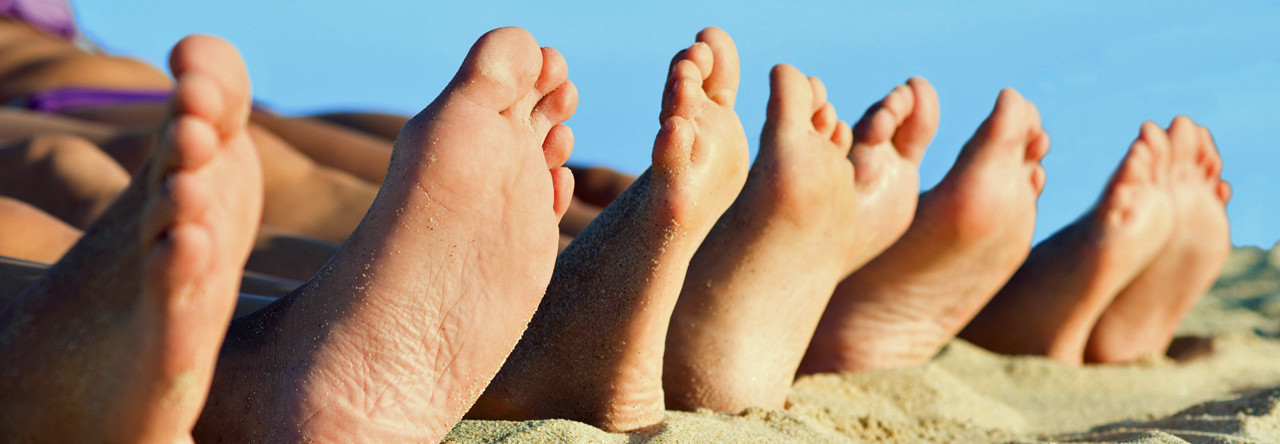The most common reason for foot pain is planter fasciitis, or heel pain. Sometimes referred to as heel spur syndrome, planter fasciitis can be present with or without an actual bony spur.
Stepping down on the foot, especially just getting up in the morning or after sitting for an extended time, can cause immediate shooting planter fasciitis pain. And pressing harder on a sore heel, the way some do with a foot that’s fallen asleep, causes planter fasciitis pain worsen. Starting exercise without warming up, Planter fasciitis flares up when the planter fascia ligament that stretches from the heel to the ball of the foot – which also supports the arch – becomes inflamed. Planter fasciitis is a serious condition and should not be ignored.
Heel spurs and planter fasciitis typically occur in people with flat feet and can usually be avoided by making a special effort to wear support shoes with arch support. Otherwise, the arch starts to collapse and stretches beyond its limits, leading to possible muscle tears and bone spurs.
Additionally high arches that pull on the muscles, tight calf muscles from lack of stretching or muscle tension that pulls away a piece of the bone can also cause planter fasciitis. In severe and chronic cases, heel spurs may require surgical correction.
Treating planter fasciitis consists of:
• Taking pressure off the foot
• Always wearing appropriate footwear with insoles.
• Using a heel cup, heel pad, heel cushion or slight heel lift to relieve pressure and reduce inflammation.
• Keeping calf muscles at a proper length using a night splint.
• Correcting leg length discrepancy via an adjustable heel lift.
• Ice massaging to reduce inflammation.
• Stretching calf muscle to reduce tightness.
Category: Plantar Fasciitis
“To minimize foot problems, just wear high heels for special occasions.” We have probably heard that before.
You love shoes. Shopping for them, trying them on and — most of all — buying them. Most professional women use high heels as part of their image. But what if your feet don’t feel so good, and they look even worse? Forced too often into the tight confines of the narrow toe box of your high heels, your toes bend into an unnatural positions. As a result, bumps and areas of thickened skin rub painfully against your shoes.
Are your beloved high heels the source of your foot problems? Yes, they probably are. High heels are one of the biggest factors leading to foot problems in women. The other is age. Frequently wearing high heels can set the stage for many common foot problems including blisters, calluses, corns, foot odor, hammer heel and others.
So, bottom line, wear them occasionally but consider other options for everyday.
Plantar Fasciitis is more than just a pair of “tired dogs”.
If you have aching or painful arches you may have plantar fasciitis. The most common symptom would be painful feet when first getting out of bed until you “walk it off”. This comes from the muscles tightening on you as you sleep. It could be from aging, from an injury or from poorly fitted shoes, among other things. See a podiatrist to at least obtain a clear diagnosis. He/she will provide you with many options. Here are some of them:
Your first option would be to stretch your calf and feet muscles a few times a day, don’t overdo activities that aggravate your feet and apply ice after exercise. There are devices that you can attach to your feet that apply a gentle stretch as you sleep. They are called “night splints”. Though some people find it hard to fall asleep while wearing them.
A second option would be to buy a better pair of shoes. Buy shoes with good arches and stable support. Ladies, it’s time to give up those high heels that probably caused the problem in the first place. It would be no fun to wear that great pair of Farragamo’s if you’re sitting in a wheelchair. There are plenty of comfortable, fashionable and supportive shoes available these days, especially the ones from Europe where they believe in health and style.
Another option would be to use a high quality insole found in high-end shoe stores or outdoor stores. Better yet, a podiatrist can fit you for custom-made insoles. Expensive, yes, but so are motorized scooters. You need not purchase orthopedic shoes. The insoles are designed to fit into a variety of shoes from dress shoes to hiking boots.
The best thing you can do is to not walk barefoot even if you are at the beach. It just makes matters worse. So find a good pair of water shoes with built-in arch supports, not just a pair of flip-flops.
An option that makes me cringe would be foot surgery. Please make this your last option. It comes with many risks, which should be clearly discussed with your doctor.
Don’t ignore your feet, because if you do, the condition will worsen.
